#taishô
Text

• Young Women in Costumes.
Period: Taishô–early Shôwa era
Place of origin: Japan
Medium: Collotype with hand coloring; ink on card stock.
#antique#antique picture#19th century#19th century picture#antique portrait#19th century portrait#antique photograph#antique photography#japan#japanese#asian#young women in costumes#Taishô#Shôwa#collotype#hand colored
53 notes
·
View notes
Photo

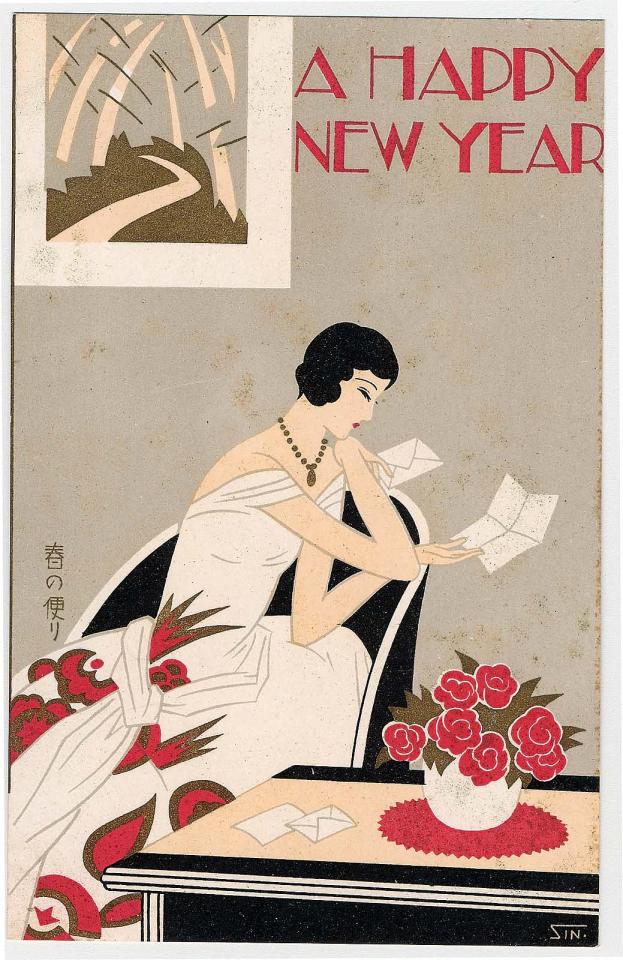



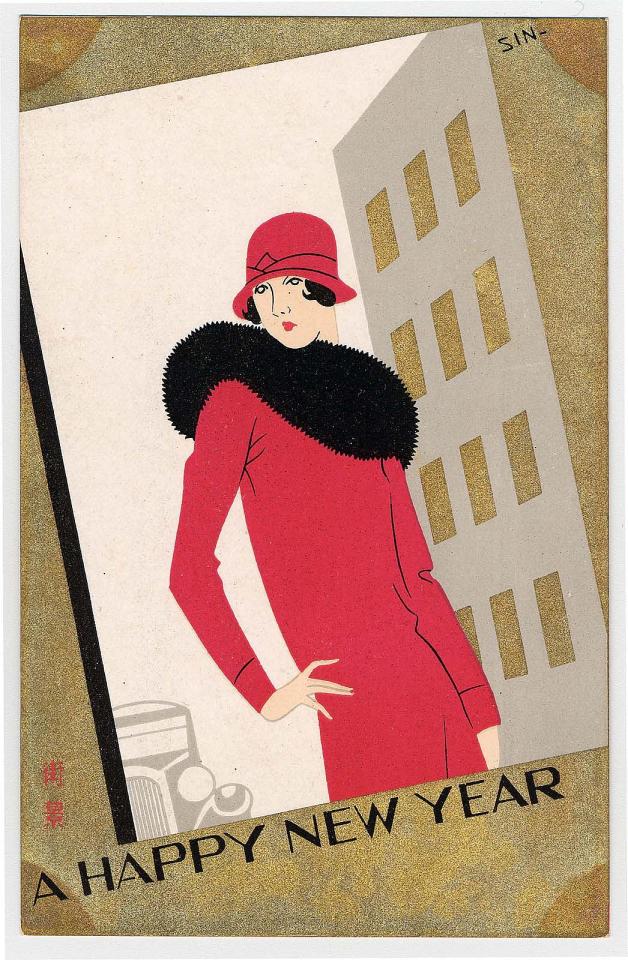

Art Deco style Japanese New Year postcards. Taishô–early Shôwa era.
1) Dressed Up (Yosooi) by an unknown artist. Published by Tanaka & Co.
2) Spring Letter (Haru no tayori) by an unknown artist.
3) Humming of Birds (Saezuri) by an unknown artist. Published by Tanaka & Co.
.4) Pavement (Pebunanto) by an unknown artist.
5) Red Rose (Akai bara) by an unknown artist. Published by Tanaka & Co
6) Woman in Coat with Fur Collar by an unknown artist. Published by Tanaka & Co.
7) Evening Party (Yakai) by an unknown artist. Published by Tanaka & Co.
Images and text information courtesy MFA Boston.
71 notes
·
View notes
Text

Maki Sozan
Fireflies on grasses at night
Taishô era-Shôwa era, 20th century
#maki sozan#fireflies#nightscape#night scene#japanese woodblock#woodblock artist#woodblock art#woodblock print#woodcut#woodblocks#print making#japanese print#japanese art#japanese#japanese prints#japanese artist#Japan#japanese beauty#firefly#art history#asian art#print maker#japanese print making#japan beauty#showa print#showa japan#showa art#taisho print#taisho era#grasses
1K notes
·
View notes
Text
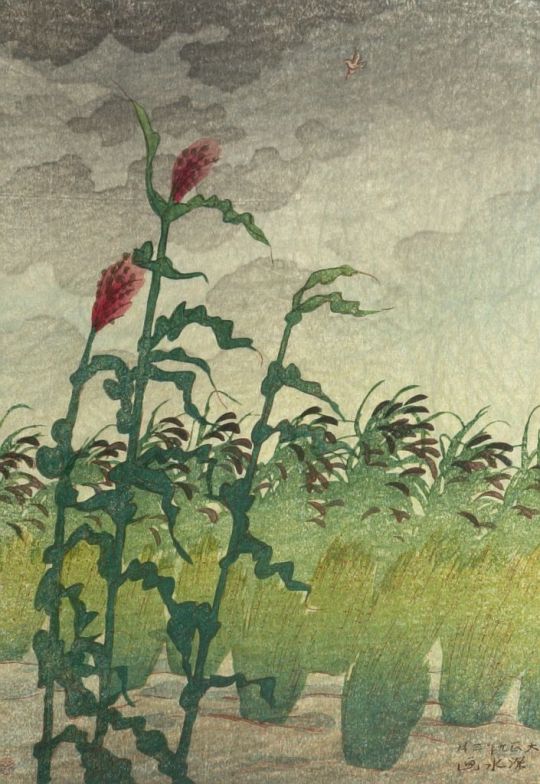
Ito Shinsui
Kibi, Approaching Storm, Taishô period, 1920
776 notes
·
View notes
Photo
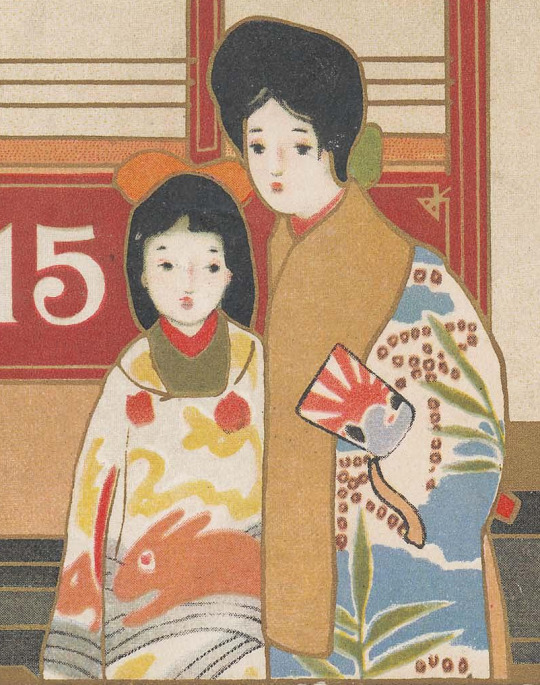
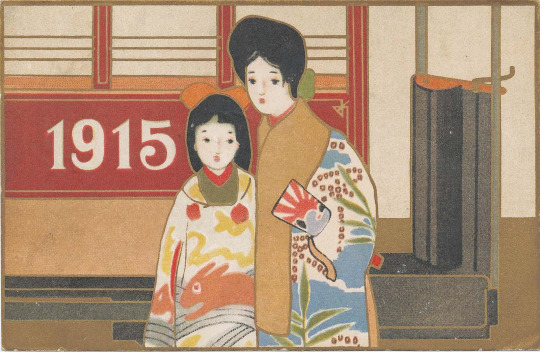
Sugiura Hisui (Japanese, 1876–1965)
Publisher: Osaka National Railway (Japanese)
Postcard of the Osaka Electric Railway Department
Taishô era
1915
70 notes
·
View notes
Text
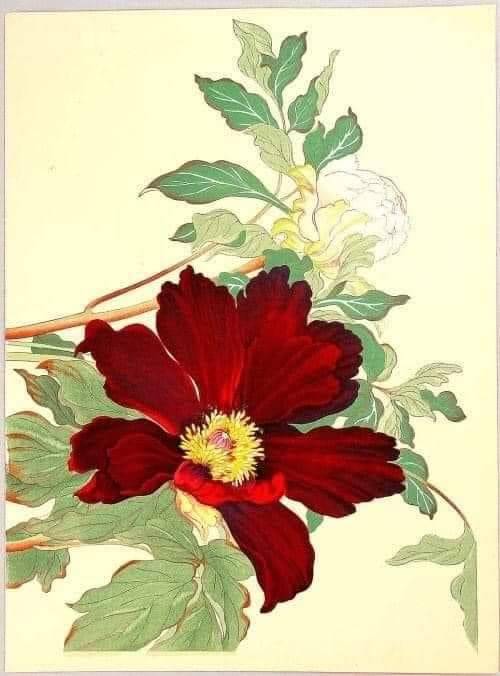
"Tanigami Konan (1879-1928) Peonies, c.1910
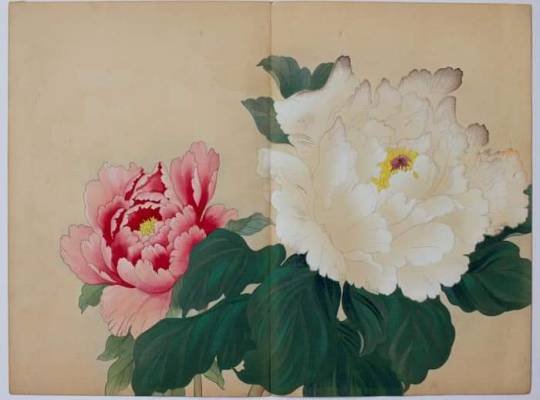
Peonies, from: Shôkei-Kaki-chô (Selected Flower Pictures)

Publisher: Unsôdô, published in Kyoto: Taishô 12 (1923), Original Japanese Woodblock Print, Size: Oban Diptych (c 39,5 x 53 cm)
Tanigami Konan (1879 - 1928)
Tanigami Konan was born 1879 in Hyogo prefecture and is a well known Kacho-e (birds and flowers) Nihon-ga artist. He was the first Japanese artist to paint Western flowers and is renown for his vivid, true-to-life painting of flowers.
Tanigami Konan produced five volumes of pictures of Western plants which were published by Unsodo circa 1917/18. This series is called 'Seiyo Soka Zofu', (A Picture Album of Western Plants and Flowers). Depicting lush flowers and exotic plants in full bloom and organised as a visual record of garden flowers, two volumes each were devoted to the spring and summer seasons, while the 5th volume combined the flowers and plants that flourished in the autumn and winter seasons.
Konan is mostly known for his signature peony series. In 1917 he was selected to produce a series of twenty-four peony prints for the Teiten (Imperial Exhibition). - More info and images here - https://www.ohmigallery.com/DB/Artists/Sales/Tanigami_Konan.asp
> Steve Gallagher > Public Domain Photos and Images
5 notes
·
View notes
Text
youtube
1 note
·
View note
Photo

#dessin#drawing#kid#enfant#child#kodomo#japon#japan#no face#sans visage#drapeau#flag#nationalism#nationalisme#black and white#taishô
22 notes
·
View notes
Photo


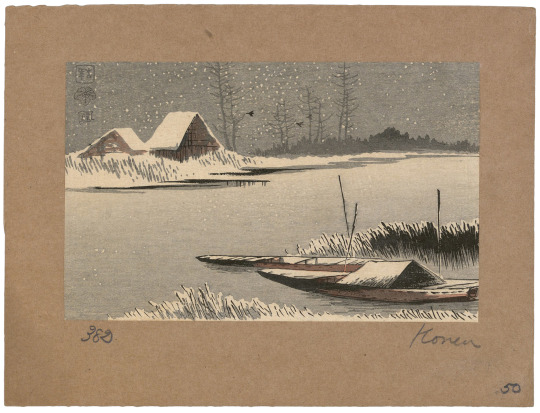
Uehara Konen - Three woodblock prints
356 notes
·
View notes
Text
🦊🇯🇵⛩️
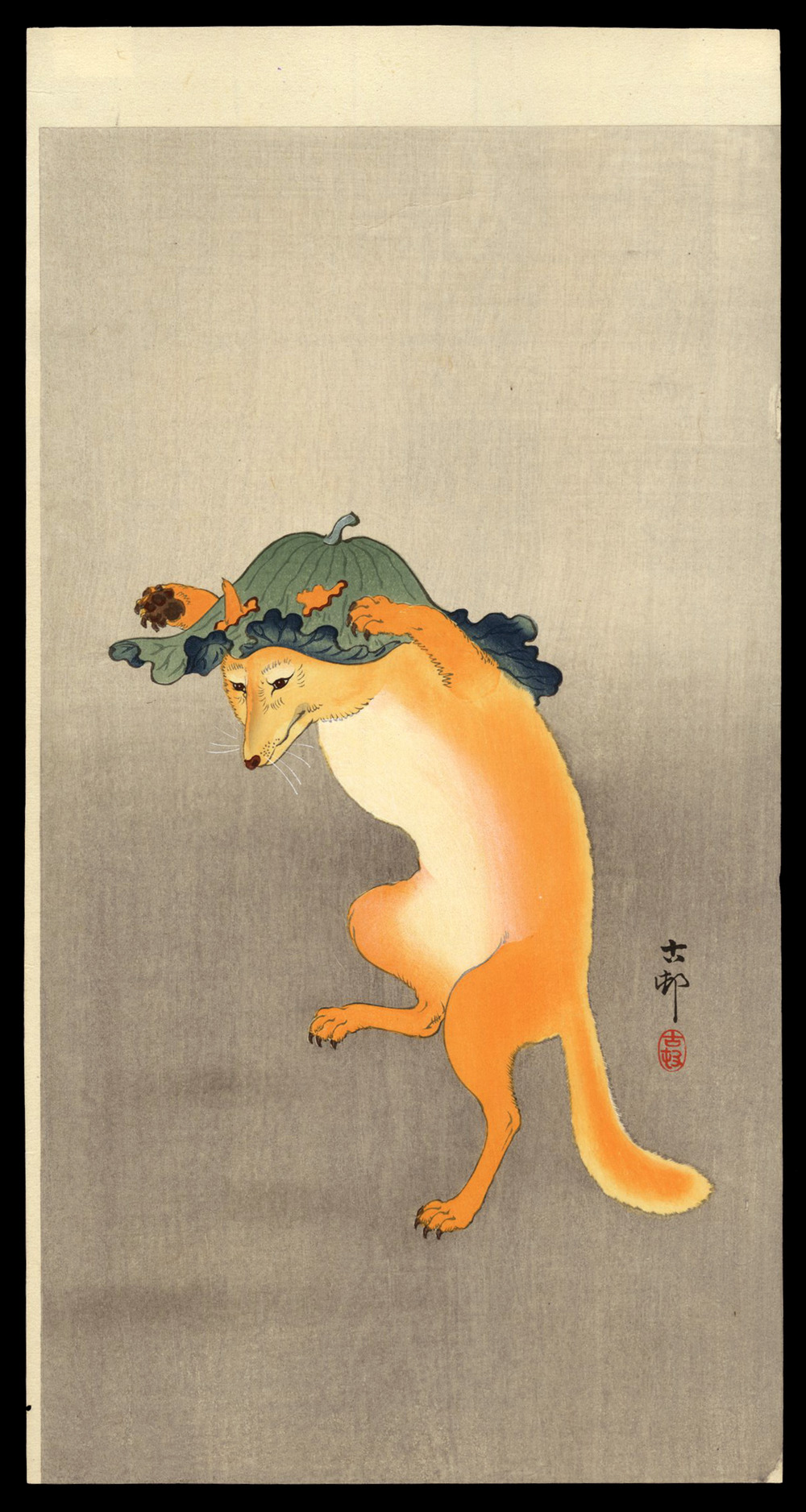
Details: Dancing Fox is one of Ohara Koson's most celebrated works. In Japanese mythology, foxes are considered supernatural beings with powers to seduce, punish, or reward. Some adherents see them as deities to be appeased and worshiped. Koson chose a lighthearted approach, depicting a whimsical frolicking fox in a manner more aligned with our contemporary understanding of Kawaii, a child-like cuteness.
Connoisseur's Note: Koson designed two versions of this design; the other has wild grasses in the foreground and background.
Image of Dancing Fox with wild grasses source:

Many collectors happen to prefer this design, as the natural woodgrain printed in the background continues uninterrupted--suggesting the mystical glow of moonlight. This design was quite popular and was reprinted later in the 1930s. These later impressions do not have such a strongly-printed woodgrain pattern nor do they have a margin on the left side.
Above information source:
Dancing Fox with Lotus-leaf Hat
踊る狐
Ohara Koson (Japanese, 1878–1945)
Meiji–Taishô era
1900s–1910s
MEDIUM/TECHNIQUE:
Woodblock print; ink and color on paper
DIMENSIONS:
Ôtanzaku; 36.3 x 19 cm (14 1/4 x 7 1/2 in.)
CREDIT LINE AND PROVENANCE:
1954 Gift of Mrs. Edward Jackson Holmes to the MFA.
ACCESSION NUMBER:
RES.54.162
SIGNED:
Koson (in block) 古邨
MARKS:
Artist's seal: Koson 画家の印章: 古邨
Above information source:
#dancing fox#fox#dancing#kitsune#ohara koson#woodblock#1910#1900s#lotus leaf#hat#lotus#meiji period#meiji-taishô period#meiji-taishô#1930s#woodblock print#mfa collections#japanese artists#japanese art#ukiyo e#ukiyo-e#google arts and culture#collecting japanese prints#trickster#the trickster#foxes#foxy
10 notes
·
View notes
Photo




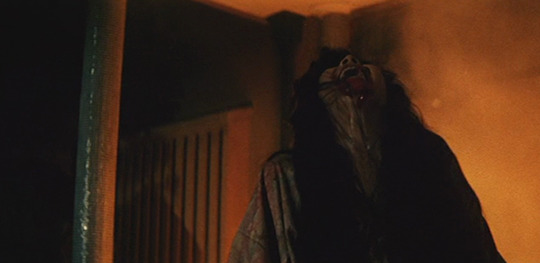


Love and Crime (Teruo Ishii, 1969)
91 notes
·
View notes
Photo
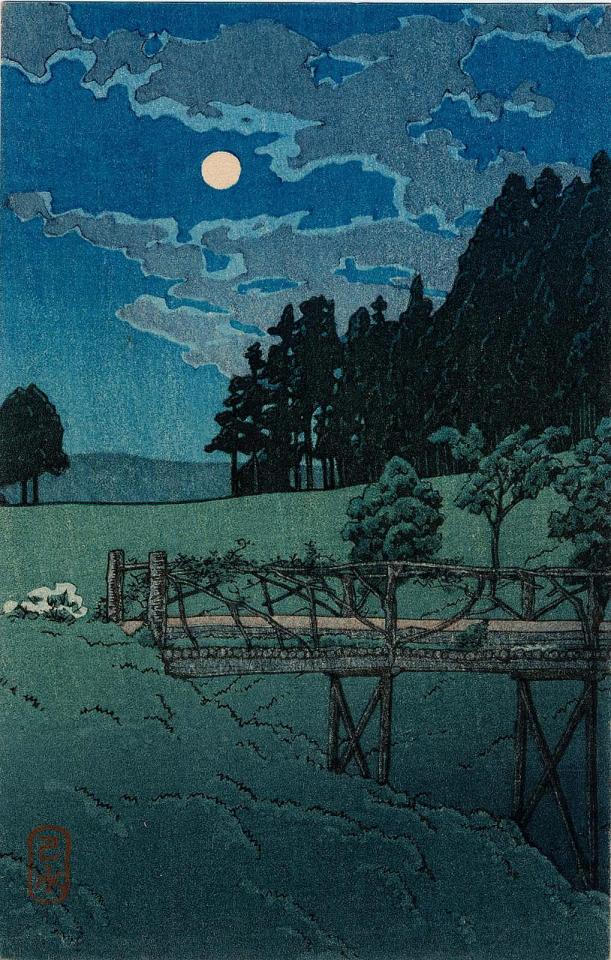
Night Scene with the Moon (Taishô–early Shôwa era) by Kawase Hasui (Japanese, 1883–1957).
Woodblock print.
Image and text information courtesy MFA Boston.
521 notes
·
View notes
Text
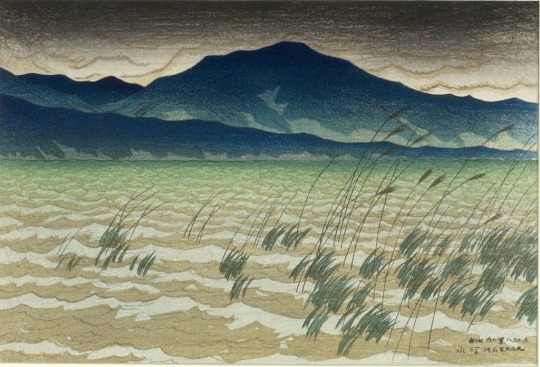
Shinsui Ito
Hira, from the series Eight Views of Lake Biwa (ômi hakkei)
Taishô period, 1917
#shinsui ito#japanese prints#woodcut#woodblock print#japanese artist#japanese art#asian art#aesthetic#beauty#nature#landscape#landscape aesthetic#japanese landscape#art history#aesthetictumblr#tumblraesthetic#tumblrpic#tumblrpictures#tumblr art#tumblrstyle#artists on tumblr#beauty aesthetic
37 notes
·
View notes
Photo

Summer
夏Onchi Kôshirô
Japanese Taishô era 1925
237 notes
·
View notes
Photo

Yamakawa Shūhō (山川秀峰, 1898–1944)
和装美人
Beauty in Kimono
Taishô era
1910s–early 1920s
55 notes
·
View notes
Text
The look of... IV: Hakata/Fukuoka
Historical context
It is said that the first Geigi started working in Hakata in the middle of the Edo period (1750s). Osaka Geiko were invited to entertain in Nagasaki, but they were limited to staying 100 or less days in the city, so they temporarily worked in Hakata, before returning to Nagasaki again. Some of those settled permanently in Hakata, making them the first Hakata Geigi.
The first official date in the history of the Hakata hanamachi is 1889, when Hakata was merged into Fukuoka and Aioi Kenban 相生券番 was established. For those of you who don't know, a Kenban is an agency for Geigi, similar to an agency for other artists.
In 1897, Nakasu 中洲 Kenban and in 1901, Mizuchaya 水茶屋 Kenban were established. In the Taishô era (1912-1926), two more Kenban were established: Shin 新 ("new") Kenban and Minami 南 ("southern city") Kenban. In the Meiji and Taishô era, the Hakata hanamachi was flourishing and the number of Geigi exceeded 2000. In the early Shôwa period (1937-45), the maximum number of Geigi was 884.
During the second world war, the Kenban system was completely dissolved. After the war was over, only Nakasu and Mizuchaya Kenban picked up business again. Like all over the country, the interest in traditional culture dwindeled and the number of Geigi shrunk. In 1985, Nakasu and Mizuchaya Kenban were merged to form Hakata 博多 Kenban.
Currently (April 2022), there are four Jikata Geigi, nine Tachikata Geigi and two Hangyoku in the city.
The look of Fukuoka Maiko
Local term: Hangyoku
※ Hairstyle: Momoware Katsura
※ Kanzashi: Kushi, seasonal Maezashi and Daikan
※ Makeup: Oshiroi, both lips painted from the start
※ Kimono: Furisode with shoulder and sleeve tucks
※ Eri: red with white embroidery
※ Obi: Han-Darari
※ Obiage: flat, shibori (white, pink, red/white)/otherwise red with silver embroidery
※ Obijime: flat or round with 1 knot, no pocchiri
※ Footwear: Zôri


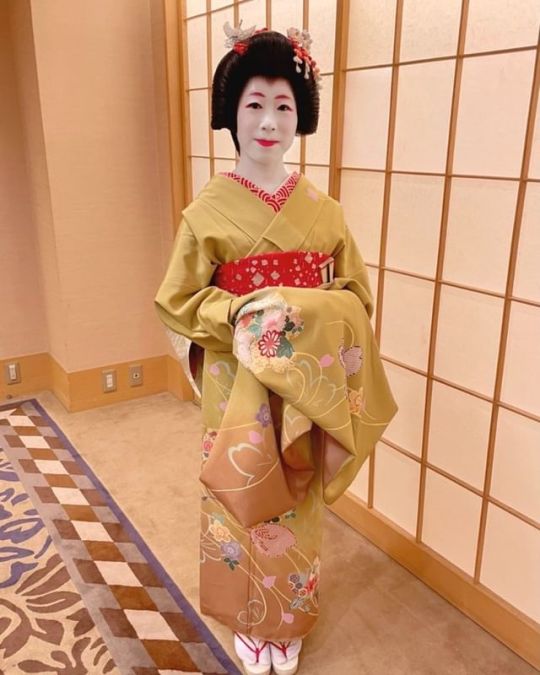


The look of Fukuoka Geiko
Local term: Geigi
※ Hairstyle: Geiko shimada Katsura
※ Kanzashi: Kushi, Bekko kogai in front and back, Maezashi
※ Makeup: Oshiroi
※ Kimono: Kuromontsuki Hikizuri, otherwise Hômongi
※ Eri: white
※ Obi: Yanagi musubi with Hikizuri, otherwise Taiko musubi
※ Obiage: always red with Kuromontsuki, otherwise white or light blue
※ Footwear: Zôri, Geta with white or blue Hanao

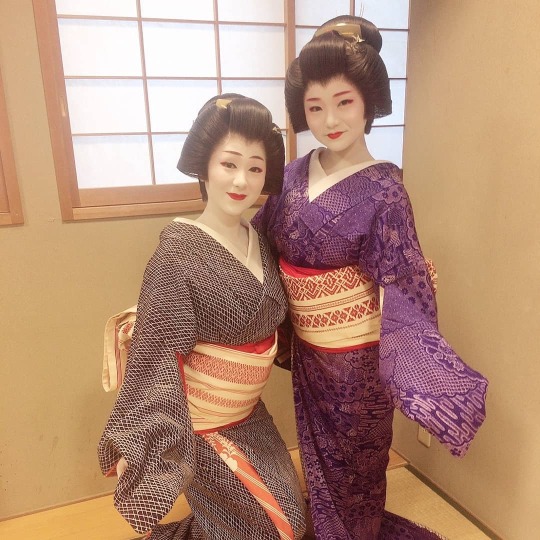

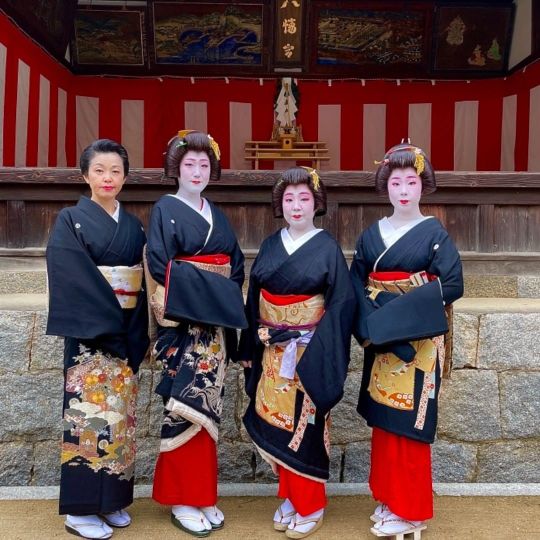

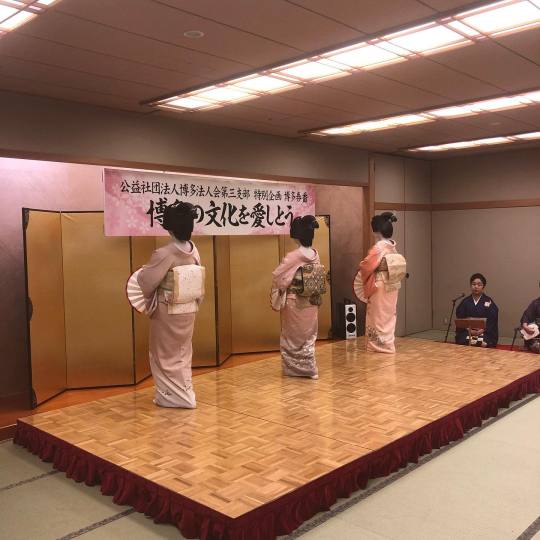
Notes
In some cities, Geigi are sorted by which Kenban they are registered at rather than in which Hanamachi they work. Apart from Fukuoka, you can see this system in Matsuyama. Hangyoku have been seen performing while wearing Iromuji or Hikizuri (the latter with Darari obi) too. Elderly Tachikata Geigi often wear the same, more simple, outfit like Jikata Geigi.

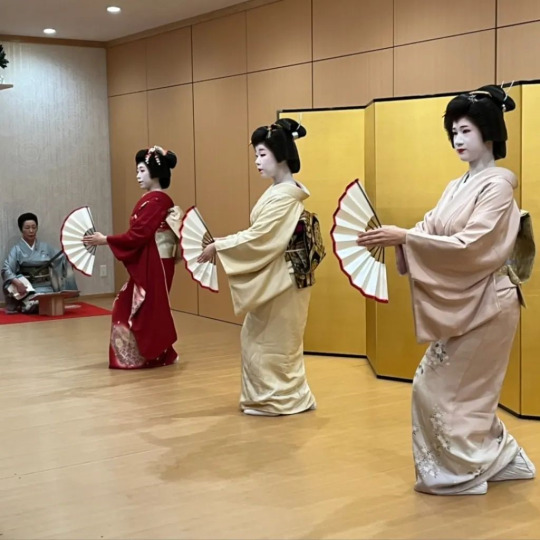
Sources
Layout by @geimaiko ♥
https://hakata-geinou.jp/img/request_en.pdf
http://hakatakenban.com/history/
https://en.wikipedia.org/wiki/Fukuoka#Formation_of_the_modern_city_(1889)
Pictures: Hangyoku dancing 2018, Nono, Reika and Kotone 2019, Nono and Kotone 2019, Hinazuru debut 2021, Hinazuru and Kochô 2021, Kochô debut 2022, Kuromontsuki with Hakata weave obi 2019, Shibori Hikizuri 2019, Wanoka debut 2020, New year 2021, Senior Geigi dancing (Umeka?) 2021, Obi showcase 2022, Koharu, Kochô and Hinazuru 2021, Hinazuru, Kochô and Reika dancing 2022
Original post from April 2022, last updated September 2023
#MG#fukuoka#kimono#geigi#geiko#geisha#maiko#hangyoku#nono#REIKA#Kotone#Hinazuru#Kocho#koharu#2018#2019#2020#2021#2022
34 notes
·
View notes